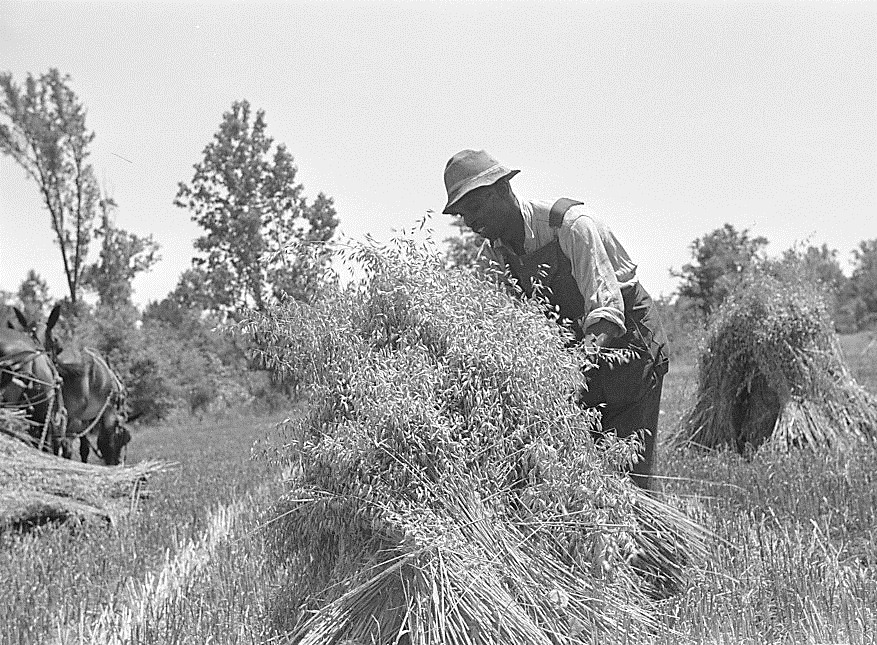Through arrangements with the US Department of Agriculture made possible by my friend and fellow historian Alex McGregor of Colfax’s The McGregor Company, I was recently able to visit Washington, D. C. and document works of agrarian art in our national collections. Among many highlights was seeing the gritty paintings of 1930’s New Deal artists like Ben Shahn as well as classical European works. Among the most beautiful were paintings on exhibit in the National Gallery by Jean-Antoine Watteau who turned to prevailing art academy representations that emphasized the human form of workers rather than the conditions of their lives. Rembrandt van Rinj, Nicholas Poussin, and Bernard Fabritius also rendered the biblical story of Ruth and Boaz in exotic settings and costume with a sacred gravity far removed from the period’s gritty realities in rural Europe. Not until Enlightenment attitudes supplanted aristocratic sentiment were peasants more fully reintegrated with aspirations of the rising middle class through art and literature consistent with era’s ideals of fraternity, progress, and rights of the common man. Enlightenment literary attention to gleaning is also notable for its association with feminine aspects of harvest and the state’s professed benevolent concern for the destitute.
USDA Whitten Building Entry Court; Washington, D. C.
Studies of customs and laws on gleaning challenge conventional interpretations that conflict over the poor’s harvest share arose with the emerging market economies of early modern Europe. But very few and obscure references to gleaning are found the late Roman period with the term virtually unknown in documents from the sixth century AD for the next six hundred years. References to the practice that emerge again in twelfth century English and French village by-laws regulate compensation of workers, describe limits to gleaning in village commons typically reserved as pasture, and are not explicitly associated with the poor. The raking of stalks missed by wielders of sickle and scythe had likely become one of the several steps embedded in the typical harvest cycle in which all able-bodied workers participated.
Jean-Antoine Watteau, Ceres (c. 1718); Commissioned for Pierre Crozat’s Paris Palazzo, oil on canvas, 55 ¾ x 45 ½ inches; Samuel H. Kress Collection, National Gallery of Art, Washington, D. C.
The dominant narrative has held that as private ownership of land and the enclosure movement weakened villagers’ traditional communal rights and the aristocratic great estates, capitalistic demands for productivity eroded moral commitments to the impoverished. But gleaning had become conventional harvest practice and had long since lost its distinct association with the indigent. Population increase since the seventeenth century and the growth of Europe’s cities created substantial numbers of landless poor. Rather than addressing the new realities with comprehensive interventions for public welfare, state officials variously enacted archaic gleaning laws that fomented conflict in the countryside instead of ameliorating needs of the dispossessed. Church leaders often invoked religious rhetoric to justify such government efforts by attempting to apply ancient Levitical imperatives and the story of Ruth to distinctly new economic realities emerging in Western Europe.
























